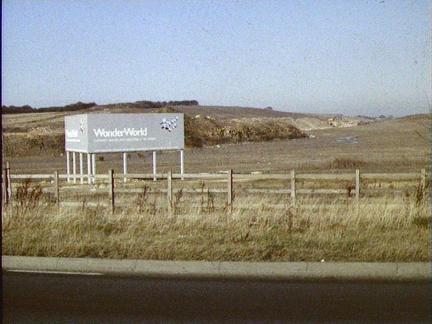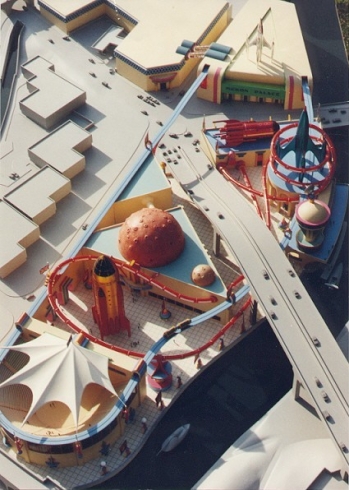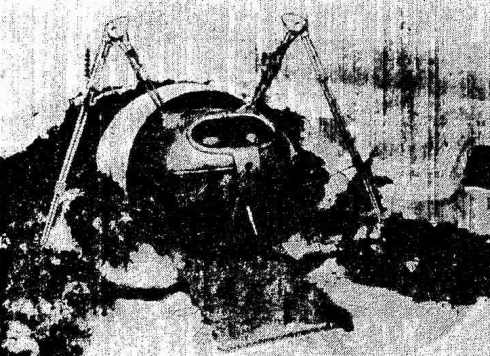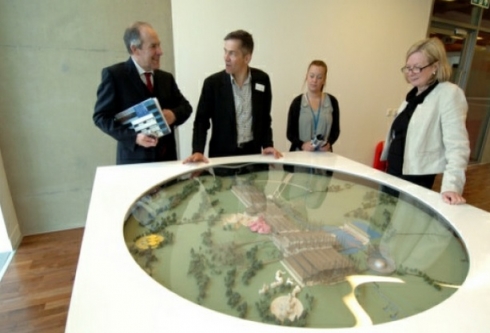4. Wonderworld (Corby, England)

It was the early 1980s. Corby, a former steel town in Northamptonshire, England, had been in the doldrums since the closure of a British Steel plant in 1980, leading to a total loss of around 20,000 jobs. "It was almost a one horse town," recalls instrument mechanic Steve Purcell, and the local authorities were determined to revive it.
Two men, Gerald Baptist and Ian Quicke, felt they had the answer. They wanted to build an enormous, Epcot-style educational theme park and resort dubbed Wonderworld. In Baptist’s words, the park would "create a completely new industry in Corby", one based around tourism and leisure. The local council were sold on the idea, and the pair formed Group Five Holdings and began to seek funding. 1,000 acres of derelict open cast land owned by the British Steel Corporation were set aside, ready to be transformed into a park that would "out-Disney Disney".
Derek Walker, the chief architect for the new town of Milton Keynes, was brought in to design the resort. At the heart of Wonderworld was to be an enormous, 450-metre-long glass dome "the size of five football pitches", reminiscent of the Crystal Palace that housed the Great Exhibition of 1851. This would host areas dedicated to land, safety, the "Lost Village", air and space, communications, the body and the world.
In the area dedicated to the body, guests would ride on a "sausage-style" canoe past "surrealistic" scenes depicting the human interior designed by Monty Python’s Terry Gilliam. Following this tour, they would arrive at a presentation by Dr Jonathan Miller on the "mysteries of the anatomy", based on his television series The Body in Question.
The communications area would be housed inside a separate structure contained in a transparent bubble, linked to the other areas by a monorail system. Here, school parties and drama groups would be able to make their own television programmes and musical recordings. This kind of "education through participation" would make Wonderworld "superior to Disneyland".

Image via Dan-Dare.org
The headline attraction in the air and space area would be an observatory designed by astrologer Patrick Moore. Nearby would be a section dedicated to science-fiction hero Dan Dare (expected to generate a fortune in merchandise sales), and much of the area had been designed by Arthur C. Clarke, author of 2001, A Space Odyssey. A Second World War-themed flight simulator would round out the line-up.
In the Land area, guests would be able to go on a mock "safari" designed by botanist David Bellamy, which would whisk them past scenes of giant plants, trees and shrubs.
In the Lost Village, meanwhile, characters from famous nursery rhymes would be brought to life. A range of merchandise aimed at children and babies was designed, including Bo Peep furniture, a Boy Blue range of games and Jack Spratt fast food.

Outdoor activities would be concentrated on the outskirts of the sprawling site. This would include an 18-hole golf course designed by Jack Nicklaus, as well as a 10,000-seater sports stadium boasting restaurants and facilities for tuition by leading sports personalities. A huge concert arena, capable of seating 30,000 people, would be designed to resemble a Martian "tripod" fighting machine from War of the Worlds.
Wonderworld was expected to be such a big draw that it would pull in guests for entire holidays rather than just day-visits. To accommodate this, 1,000 lodges would be constructed, along with as many as seven hotels. The resort’s restaurants would serve fast food, but the designers hoped to move away from American dishes and produce English fare instead. The project's backers predicted that it would attract 4 million visitors per year initially, but that this could rise to as many as 13 million – Walt Disney World levels – eventually.

Image via Northamptonshire Telegraph
Financing was never forthcoming, and the Wonderworld project was finally abandoned some fifteen years after it was initially proposed when the council ran out of patience. The only thing built on the site was a large Wonderworld sign, along with a small cabin. The sole reminder is a scale model, now installed in the Corby Cube, the £47.5m building that opened as part of yet another regeneration scheme for the town in 2010.

Comments
This just posted regarding Battersea!
http://www.standard.co.uk/news/london/500m-worth-of-homes-sell-in-days-at-battersea-power-station-9330615.html